If you’re looking for a close-to-home adventure in the Tampa Bay area, head on over to Fort De Soto Park in St. Pete. You can make a day out of your visit, or you can choose instead to take a short ferry ride from Fort De Soto to Shell Key Preserve or Egmont Key. Here’s what to expect at Fort De Soto Park and Shell Key, and find out more about Egmont Key here.
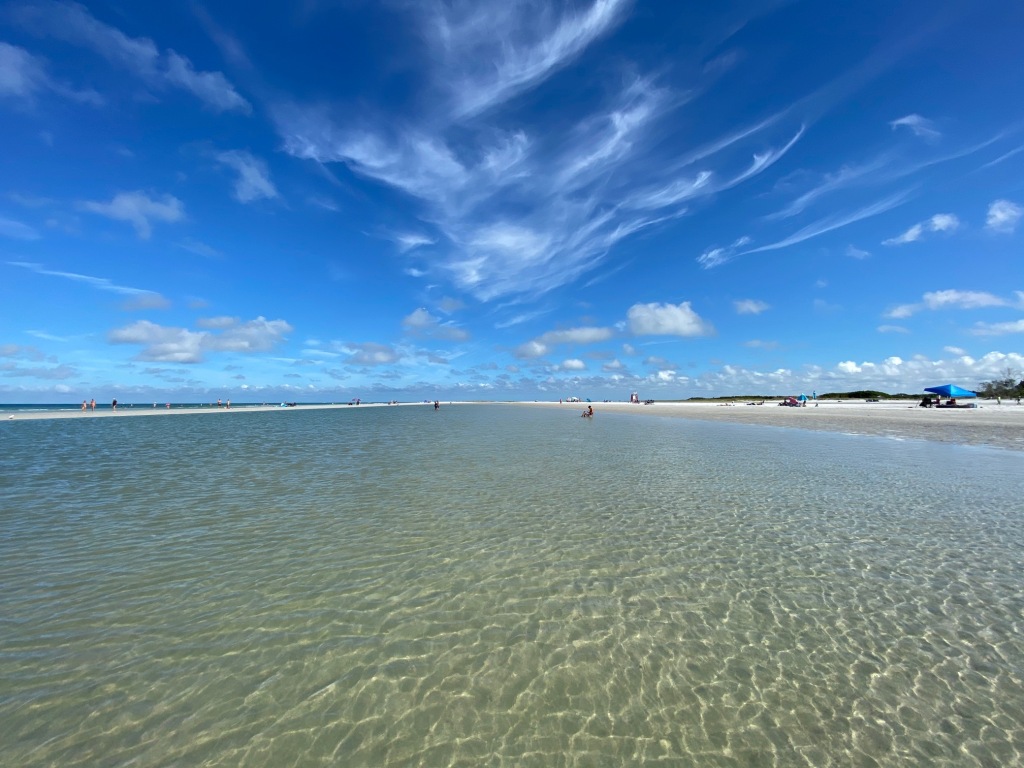
Fort De Soto is nestled among five interconnected islands, according to the Pinellas County Parks website. Here are a few cool facts and figures about the park:
- It’s 1,136 acres, making it the largest park in the Pinellas County Park System. The park has seven miles of waterfront and three miles of sandy beach.
- There are 328 species of birds. The park is home to a protected shorebird habitat area that’s not open to the public.
- The beaches at Fort De Soto also attract loggerhead sea turtles, which lay eggs there between April and September. If you visit in those months, you’ll likely see several areas marked by signs to indicate where sea turtle eggs are buried.
- TripAdvisor named Fort De Soto America’s Top Beach in 2009, and “Dr. Beach” named it the nation’s top beach in 2005.
- There are more than 2.7 million visitors each year. It can get busy but if you time your visit right—as in, start early in the day—you won’t feel like you’re there with all 2.7 million.
Find a map of Fort De Soto Park here. An audio tour of the park, about 6 minutes long, can be found here.
Be prepared to pay some tolls on your way there – first the Skyway Bridge if you’re coming from the south and then local tolls (this is where a SunPass comes in handy). Once you get to the park entrance, you’ll pay $5 per vehicle via a mobile parking app or through one of the onsite terminals. Even if you have the ParkMobile app, you may want to pay at the terminal and get a receipt! Here’s why: We used our app and thought we were good but still ended up with a $30 parking ticket….maybe because we didn’t have a receipt displayed?
So, you’re ready to check out Fort De Soto? We highly recommend it. Here are 11 things you can do at St. Pete’s Fort De Soto Park. Then read on to discover more about Shell Key Preserve, a short ferry ride away from Fort De Soto.

11 Things to Do at Fort De Soto Park in St. Pete, Florida
1. Discover the fort. The park is called Fort De Soto for a reason. Construction first began in November 1898, following a demand for military defenses in the Tampa area after the Spanish American War. That led to the construction of an office, mess hall, sleeping quarters, and a stable. (History buffs, find out more details about the fort in this handy brochure.) Nowadays, a walk around the fort makes for some good photos and reflection on history. The fort is named for explorer Hernando De Soto. Bring your bug spray! A 2023 visit to the fort led to us getting attacked–by mosquitoes, not soldiers.
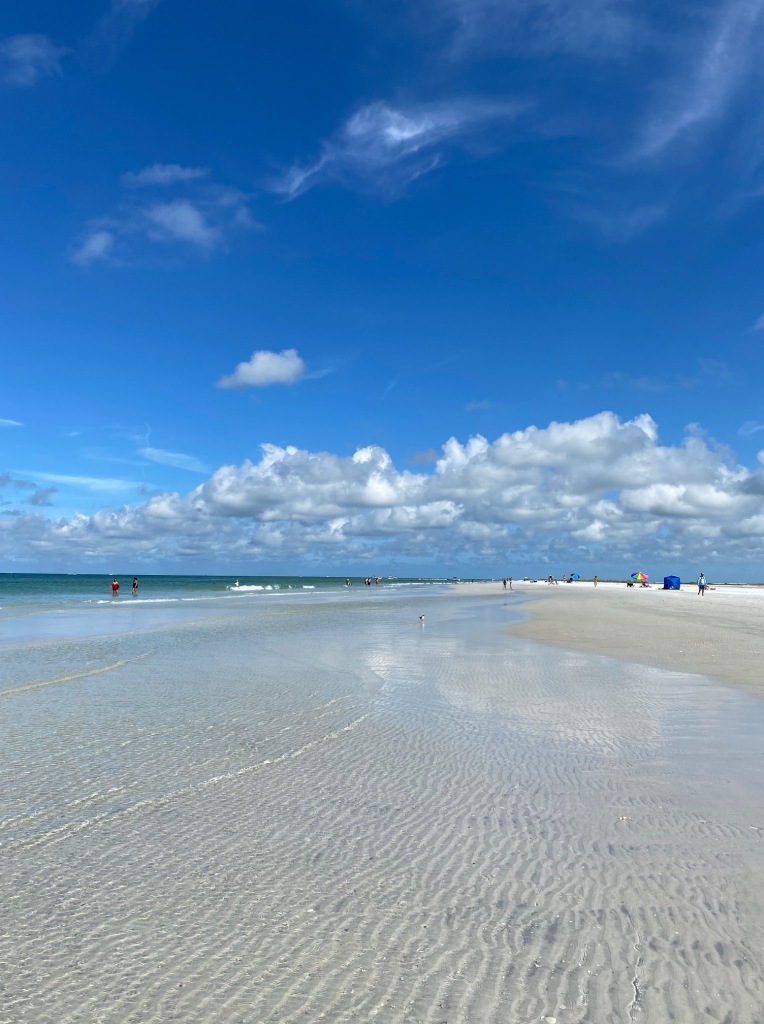
2. Have a beachy time. Naturally, the major attraction for Fort De Soto Park is its pristine beaches. There’s North Beach and East Beach, and North Beach is the busiest of the two. When we visited, the beaches had a quieter, family-like feel. One warning about North Beach: There’s a large area of beach water—it looked like a pond—to cross before actually reaching the shoreline itself. Some people stopped before that to set up their stuff, but most went through the water (while hauling all their beach gear and also talking on the phone) to get closer to the shore. You may want to have a backup plan if you don’t want to schlep through knee-deep water.
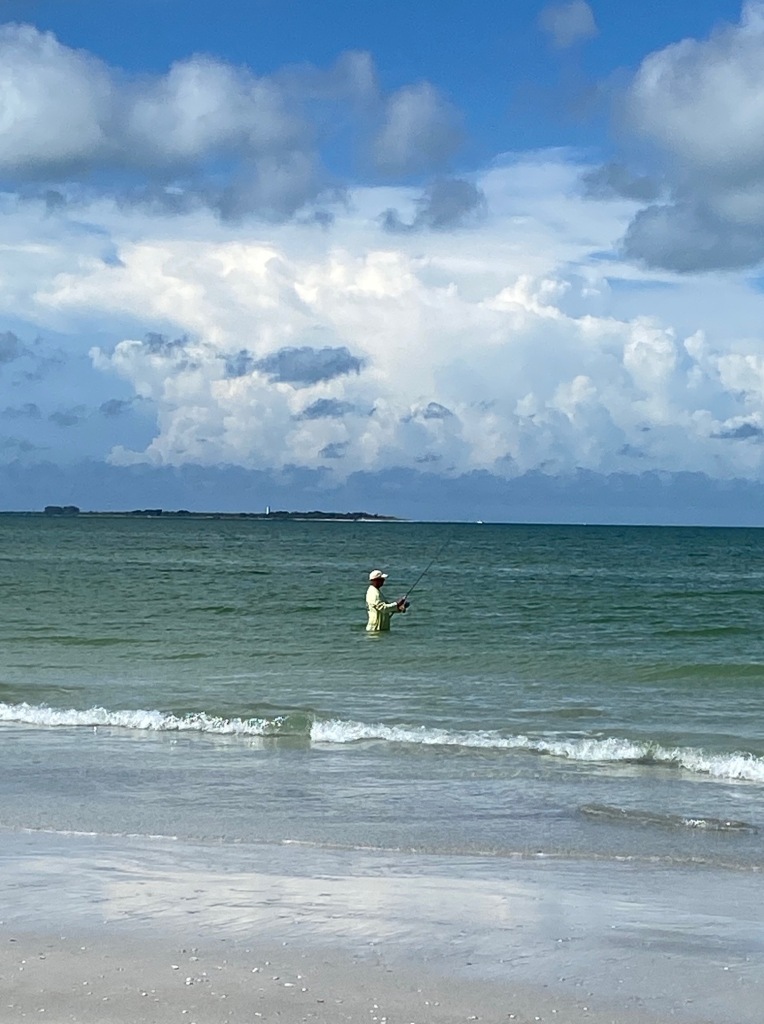
3. Fish. There are lots of great fishing spots both right outside of Fort De Soto Park (you still have to pay for parking) and in the park itself. The park has two piers and bait shops, and there are plenty of spots where you can pull over and throw in your line. Note that the park’s Bay Pier is closed through winter 2023 during its renovation. Gulf Pier is still open.
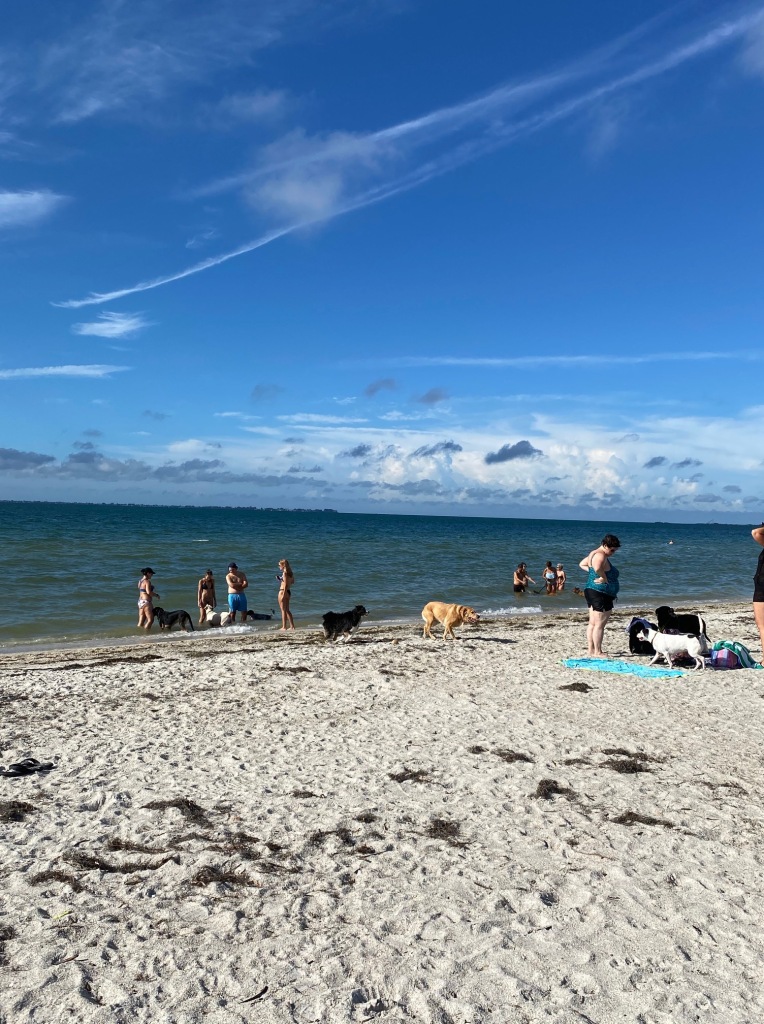
4. Bring Fido for some fun. One cool thing about Fort De Soto Park is its dog beach area, located near one of its piers. One you enter the park and reach a stop, make a right. There are signs to guide you to the dog beach area. There’s also a non-beach dog park, so if your favorite canine buddy is not into the water, you can hang out at the dog park instead. During our visit, we saw lots of dogs frolicking near the shore – or remaining patient while their doggie moms and dads chatted.
5. Take a walk. While you can always walk on the beach, there are several designated trails in the park, including the Arrowhead Family Picnic Area, the Multipurpose Trail (it’s seven miles long and spans most of the park), and the Barrier-Free Nature Trial. The latter is wheelchair-accessible and has several auditory interpretive stations.
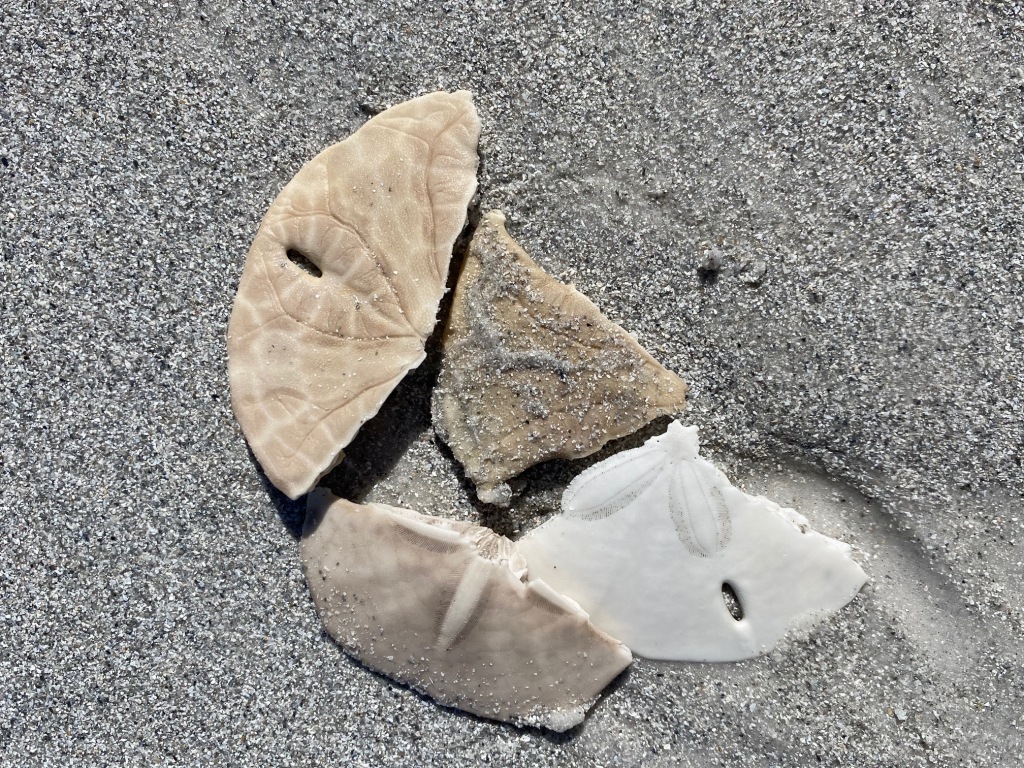
6. Do some shelling. There’s some good shelling to be had at Fort De Soto Park although if that’s your main focus, you should venture out to Shell Key Preserve or Egmont Key for even more shells. That said, one shelling trend at Fort De Soto is sand dollars, especially at the tip of North Beach. We read Trip Advisor reviews of people finding scores of sand dollars at North Beach, some of which were found while snorkeling. Although we didn’t find a similar bounty, we did find lots of sand dollar fragments as we walked along North Beach.
7. Go biking, canoeing, or kayaking. The park has a 2-mile self-guided canoe trail; biking is popular especially on the Multipurpose Trail. The good news is that you can rent bikes, canoes, or kayaks at the park itself.

8. Camp out. Right before you enter the park, there’s a campground where you can set up your tent and enjoy some bonding with nature, right on the water. When we took a peek, the camping area was crowded. Bring your bug spray.
9. Picnic. You have your choice of shelters with grills where you can set up with friends or family for a cookout or a relaxing day at the beach. Some beach and picnic areas are even near playgrounds, so the little ones in your group have even more things to do during your Fort De Soto Park visit.
10. Enjoy the gift shop and concession stand onsite. A nice beachy gift shop will help you load up on towels, floaties, sunscreen, or anything else you that you forgot. Then, grab a bite to eat at the concession stand. Both are located adjacent to each other, a short drive away from North Beach. The hours for these are a little different from the main park hours, although you can still use the restrooms there during normal park hours.
11. Visit the Quartermaster Storehouse Museum. History lovers and those who want an air-conditioned escape, don’t miss the unassuming Quartermaster Storehouse Museum, located in a white house beside the Gulf Pier parking area. It’s a reconstruction of an Army Quartermaster Storehouse from the 1900s. The exhibits inside chronicle different time periods of the park’s military history and general history. Although the museum is small, it’s detailed and interesting. The museum is open from 9 a.m. to 4 p.m.
Two quick tips for your visit to Fort DeSoto:
–Keep the park’s hours in mind. It’s open from 7 am to sunset. If you’re camping there, you can enjoy the park outside of these hours.
–Check the park website in advance to learn about any road closures that may affect Fort De Soto’s hours. When we looked, the website said that even with special events, all area roads would be open by 9 a.m.
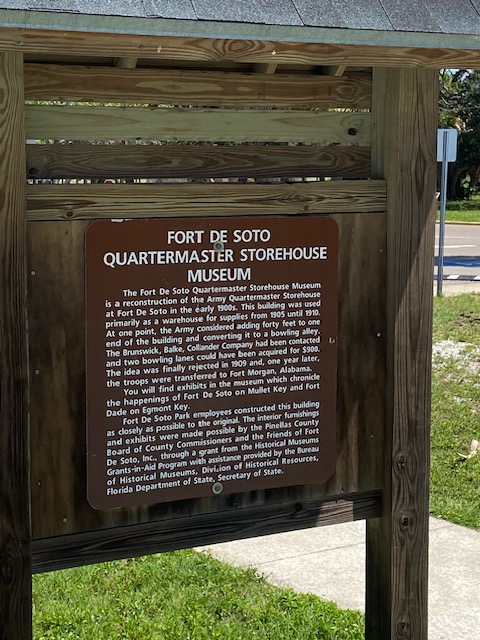
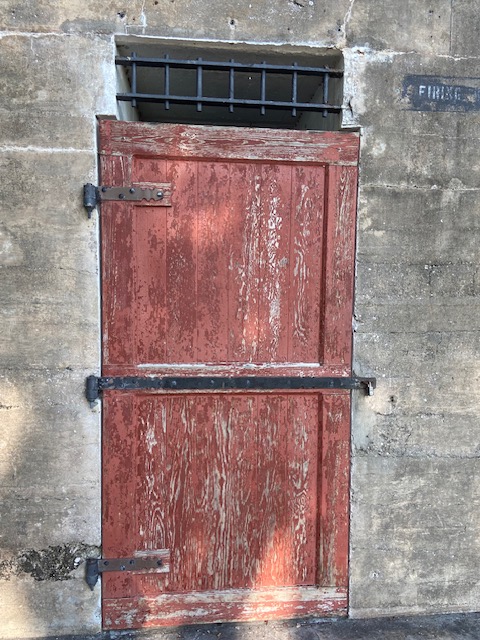
Here’s What It’s Like to Visit Shell Key Preserve
So, let’s say you’ve visited Fort De Soto Park and you want to explore the nearby area even more. Or, your friends have mentioned something about a little barrier island near Pass-a-Grille and St. Pete Beach called Shell Key – maybe they were there on a boating outing or they took the ferry there – and you want to see Shell Key Preserve for yourself.
First, here’s the first big question you might ask: Is there good shelling at Shell Key Preserve?
How’s the Shelling at Shell Key Preserve?
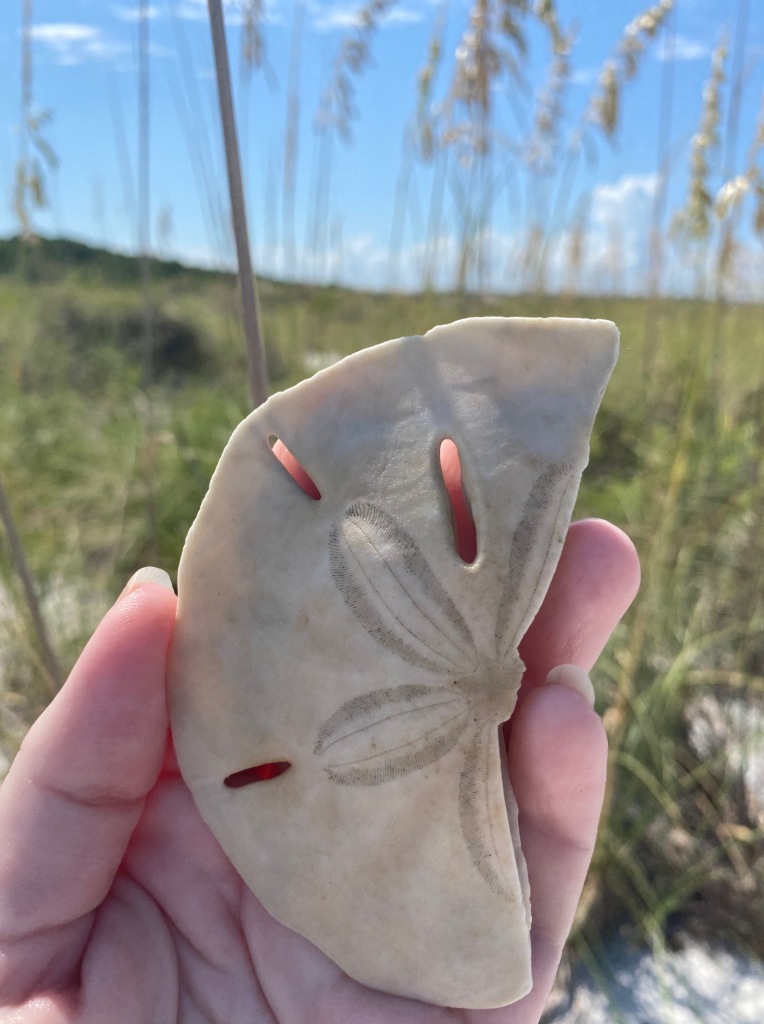
The answer is yes. There are tons of small shells. If you’re newer to the area or don’t do shelling a lot, you’ll be amazed at some of the larger finds on Shell Key. If you collect shells regularly (or even just snap pics of them for your IG feed), then you probably have visited beaches that offer just as many shells without the extra step of hopping on a boat to visit.
That said, if you’re into sand dollars, Shell Key is definitely worth a look. It’s not that far from Fort De Soto’s North Beach, so both areas have lots of sand dollar and sand dollar remnants.
Plus, during our visit to Shell Key, one person was snorkeling in shallow water and found a huge—probably a foot or so big—conch shell. So, your shelling experience may depend on how much you’re willing to look around and when you are visiting (low tide is usually best).
Getting to Shell Key Preserve
Our visit to Shell Key started at a boat ramp located before you enter Fort De Soto Park. So, you avoid the $5 park entrance fee but there’s a $5 fee to park at the boat ramp area. That said, Hubbards Marina—the company that operates the ferry—will cover your parking fee. Check their website for current ferry rates. As of August 2023, the cost is $35 per adult and $20 for children. You can pay in advance online or pay onsite. There also are other companies that have a ferry/shuttle to Shell Key, such as Shell Key Shuttle.
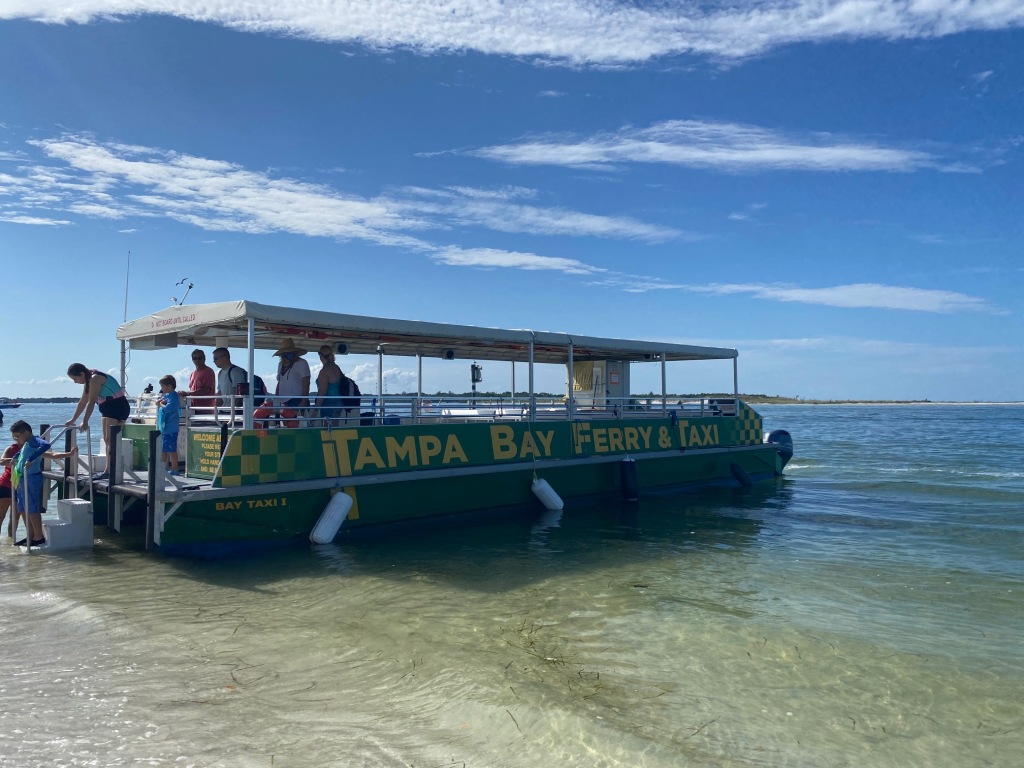
If you’re using information online from Hubbards to time your ferry trip to Shell Key, call them to double check that the times online are still valid. We got there and found some slight variations in the time the ferries went to Shell Key and the times when it would return to the boat ramp that day.
Here’s another important planning note for visiting Shell Key Preserve: It’s literally a preserve and nothing else. Zip. Zilch. Nada. So, make sure you hit the restroom before leaving (there are bathrooms at the boat ramp) and bring lots of supplies with you, including water, beach gear, and any food. We also recommend wearing or bringing shoes you can wear in the water, as the sand is a bit rocky due to shells and rocks.
We boarded the ferry, where the friendly guide oriented us to the nearby area, including Tampa Bay Watch (an environmental group that has helped clean the local waters) and the upscale Tierra Verde neighborhood. You can always watch out for manatees and dolphins on your ferry ride—we saw three friendly dolphins splashing about on the return trip. The guide also offered us water for sale and a $4 mesh bag for shell collecting.
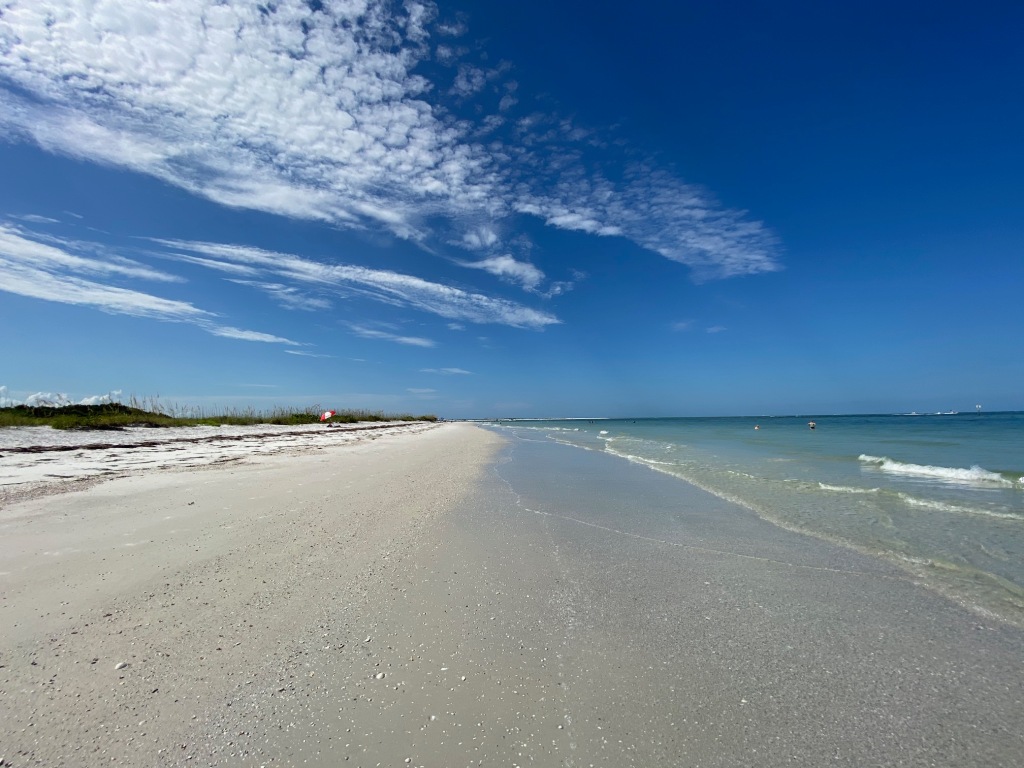
After the 20-minute ferry ride, we landed at Shell Key, which is essentially a long shoreline with some trees. We thought it’d be completely peaceful, but there were people who had set up their boats and were playing music. Plus, we visited on a Sunday, so there were lots of boats out and about. Nothing wrong with any of that, just be forewarned that the beautiful scenery may come with a soundtrack and more people than you anticipated.
Once on Shell Key Preserve, we watched others lay on the beach, walk along the shoreline, swim, collect shells, bird watch (it’s a designated area for migrating and nesting birds), and snorkel. The water was turquoise, and the sky was blue, so it was a picture-perfect Florida day for boating and beaching. At a certain point, people would bring out their drinks or food because, after all, beach time requires refueling.
The first ferry to leave Shell Key Preserve was about two hours later, and we noticed many of the people who came on our original ferry returned on that trip. There’s plenty to do at Shell Key but it was hot. For those with young kids, you know your limits when doing things with them. If you plan to spend several hours during your visit, bring a beach umbrella so you don’t get overheated.

If you’re completely into Shell Key, you can also camp there. Make sure to get a camping permit in advance. However, during sea turtle nesting season, you can’t do any campfires as the light from the fire would disorient the turtles. Plus, remember that there aren’t any facilities on Shell Key, so be prepared!!
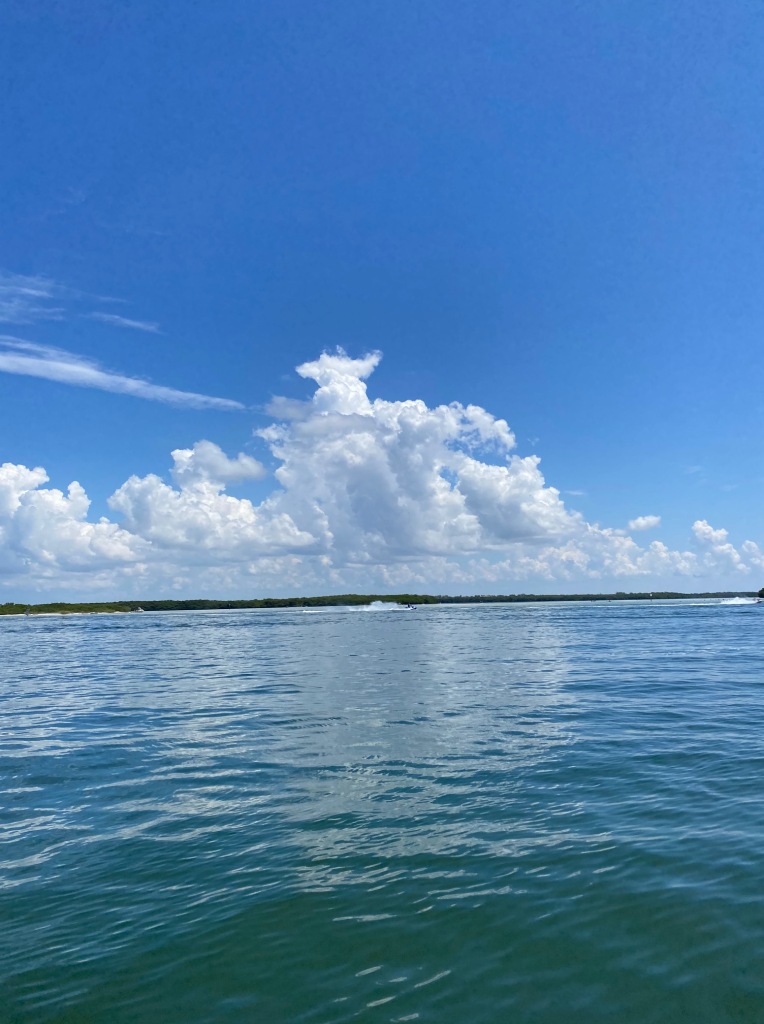
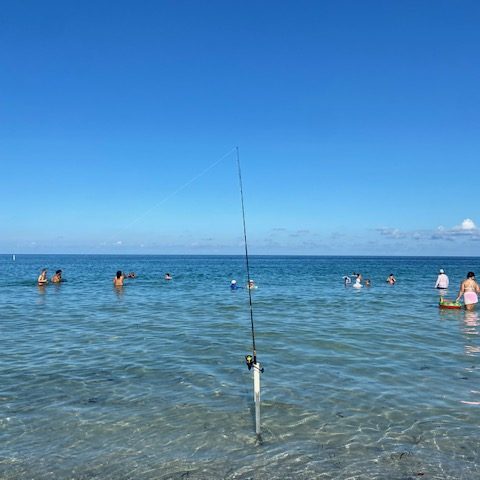
Leave a comment